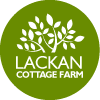As part of our overall planning for Lackan, and as one of the designs on my Diploma in Applied Permaculture Design, I’m looking at how we can better integrate horses into a permaculture design. Not an easy task, as creating closed loops on a relatively small area of land means considering winter forage and bedding, both of which are never going to be completely met from the land but which can be supplemented, in the form of gorse and rushes. Both of which people have spent 150 years eradicating from the land here. Our horses do however provide a hugely valuable resource – manure, which feeds our vegetables incredibly well.
What we can do however is create a system that manages the balance between providing some grazing and recreation for the horses, whilst maintaining the land in good health. After six years of really not looking into this, the time has come when we are focusing on it as a matter of urgency.
It is now approximately 7 weeks since the horses were completely withdrawn from the pasture, other than 1 day stint in the side field by the woods. The results are quite noticable – although the grass is growing much more slowly at this time of year, we’ve had a warm autumn and it is still growing. Certainly the biggest and most damaged of the fields is looking considerably better, and the bare soil is becoming covered. This time last year it was damaged to the extent that the horses had churned the ground up and there was no growth on around a quarter of the field. This also resulted in a lot of puddles and standing water. This time we’re not seeing that, despite plenty of rainfall.
The side field that we had to put the horses in for a single day, did not fare well. The ground was wet and plant cover pretty thin, and it sustained significant damage in a short period of time, but unfortunately we had to put them out for a day while we were away. Certainly a lesson learned there.
The horses are coping well, as horses do. Each morning, they all get a short time in the small paddock by the stables, which allows them to have a roll and a run around while their stables are cleaned out. Then they are moved to the yard where they can eat some hay, take a walk and socialise together. The plan is that next season the fields will have begun winter in far better condition, allowing us to let the horses out onto the grass for one day a week if conditions are favourable.
The pallet bins in the yard are filling up well with manure cleared from the yard which is being mixed with other material from the truck food bins and garden, so they should be a rich growing medium come the spring.
It’s really encouraging to see the land recovering, and now we have to consider how to deal with the inputs of forage and bedding that we need for the horses under this system.





